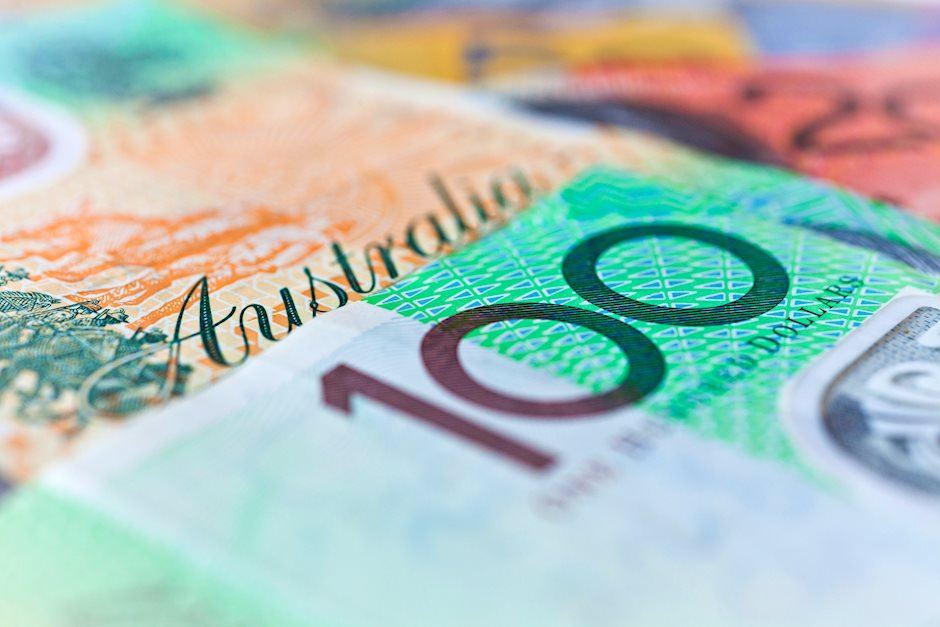Australian Dollar plunges after Fed's hawkish cut, cautious Powell
- Aussie dips near 0.6200 amid lingering risk aversion.
- Fed’s cautious projections fuel USD resilience.
- China’s slowdown and tariffs weigh on Aussie sentiment.

The Australian Dollar hovers near 0.6200 after the Federal Reserve’s rate cut and fresh projections signaled a more measured policy path. Although the Fed lowered rates by 25 basis points as expected, the updated Summary of Economic Projections hinted at tighter conditions ahead. China’s slowdown and tariff concerns continue to cap the Aussie’s upside.
Daily digest market movers: Aussie struggles after Fed signals cautious easing path
- The Federal Reserve lowered its policy rate by 25 basis points to a 4.25%-4.50% range, as expected, but highlighted future caution.
- Revised projections show a 2025 Fed funds rate at 3.9%, up from 3.4%, indicating a more hawkish approach to long-term policy.
- Fed Chair Jerome Powell emphasized softening labor markets, sustainable wage growth, and the need to proceed carefully with further cuts.
- With Powell sounding cautious and the Fed signalling fewer cuts in 2025, US Treasury yields spiked and well as the USD which pushed the pair down.
AUD/USD technical outlook: Aussie near oversold territory as bearish momentum persists
The AUD/USD pair declined by 0.6% to 0.6300 on Wednesday, plumbing lows not seen since October 2023. The Relative Strength Index (RSI) hovers near 30, signaling oversold conditions as it continues to decline sharply. Meanwhile, the Moving Average Convergence Divergence (MACD) histogram prints rising red bars, underscoring persistent bearish pressure. Although these indicators hint at a potential corrective bounce, lingering uncertainties around the Fed’s cautious outlook and China’s economic slowdown may limit any meaningful recovery.
Australian Dollar FAQs
One of the most significant factors for the Australian Dollar (AUD) is the level of interest rates set by the Reserve Bank of Australia (RBA). Because Australia is a resource-rich country another key driver is the price of its biggest export, Iron Ore. The health of the Chinese economy, its largest trading partner, is a factor, as well as inflation in Australia, its growth rate and Trade Balance. Market sentiment – whether investors are taking on more risky assets (risk-on) or seeking safe-havens (risk-off) – is also a factor, with risk-on positive for AUD.
The Reserve Bank of Australia (RBA) influences the Australian Dollar (AUD) by setting the level of interest rates that Australian banks can lend to each other. This influences the level of interest rates in the economy as a whole. The main goal of the RBA is to maintain a stable inflation rate of 2-3% by adjusting interest rates up or down. Relatively high interest rates compared to other major central banks support the AUD, and the opposite for relatively low. The RBA can also use quantitative easing and tightening to influence credit conditions, with the former AUD-negative and the latter AUD-positive.
China is Australia’s largest trading partner so the health of the Chinese economy is a major influence on the value of the Australian Dollar (AUD). When the Chinese economy is doing well it purchases more raw materials, goods and services from Australia, lifting demand for the AUD, and pushing up its value. The opposite is the case when the Chinese economy is not growing as fast as expected. Positive or negative surprises in Chinese growth data, therefore, often have a direct impact on the Australian Dollar and its pairs.
Iron Ore is Australia’s largest export, accounting for $118 billion a year according to data from 2021, with China as its primary destination. The price of Iron Ore, therefore, can be a driver of the Australian Dollar. Generally, if the price of Iron Ore rises, AUD also goes up, as aggregate demand for the currency increases. The opposite is the case if the price of Iron Ore falls. Higher Iron Ore prices also tend to result in a greater likelihood of a positive Trade Balance for Australia, which is also positive of the AUD.
The Trade Balance, which is the difference between what a country earns from its exports versus what it pays for its imports, is another factor that can influence the value of the Australian Dollar. If Australia produces highly sought after exports, then its currency will gain in value purely from the surplus demand created from foreign buyers seeking to purchase its exports versus what it spends to purchase imports. Therefore, a positive net Trade Balance strengthens the AUD, with the opposite effect if the Trade Balance is negative.
Author

Patricio Martín
FXStreet
Patricio is an economist from Argentina passionate about global finance and understanding the daily movements of the markets.

















